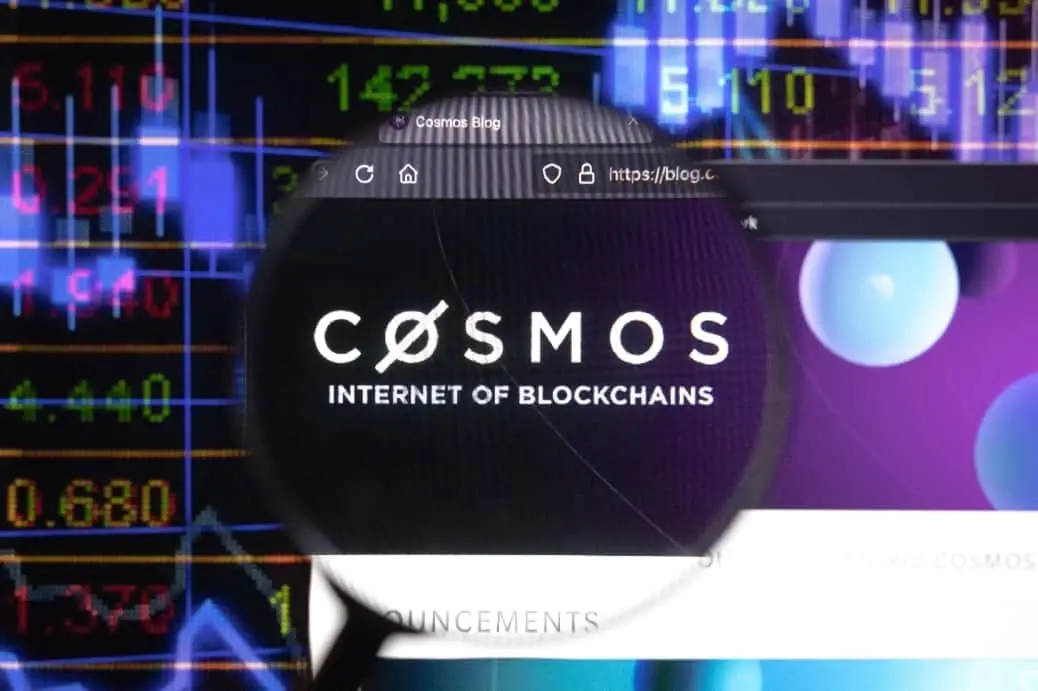Analysis of Umee: Cross-chain DeFi in the Cosmos Ecosystem
Source: TokenInsight Research
Umee is an application-specific blockchain in the Cosmos ecosystem, focusing on cross-chain DeFi application scenarios. The project successfully completed a public offering on CoinList in December 2021, raising nearly $32 million. Before the public offering, the project secured seed round funding of $6.3 million from investment institutions including Polychain Capital, Alameda Research, Coinbase Ventures, and CMS Holdings.
Cross-Chain Over-Collateralized Lending
Umee is a PoS blockchain developed using the Cosmos SDK, and the first application on the chain will be a cross-chain over-collateralized lending protocol. The Umee mainnet officially launched on February 16 and will connect with IBC (Inter-Blockchain Communication) and other blockchains in the Cosmos ecosystem, such as Terra and Osmosis. The Umee chain will also connect to Cosmos's official cross-chain bridge, Gravity Bridge, and Ethereum. The diagram below illustrates the relationship between the Cosmos ecosystem, the Umee chain, and Ethereum.

Source: Umee Whitepaper
Users can deposit native tokens from the Cosmos ecosystem, such as $ATOM, on the Umee chain to lend ERC-20 assets on Ethereum. (The reverse operation can also be performed.) Umee's DeFi protocol will be deployed on both the Umee chain and Ethereum.
Let’s illustrate the specific operational mechanism with an example from the Umee whitepaper. When User A deposits $150 worth of $ATOM on the Umee chain, A will earn interest income and can choose to use the deposited token as collateral to borrow $100 worth of ETH on Ethereum. The Umee protocol requires smart contracts to be deployed on both the Umee chain and Ethereum and ensures that both sides have sufficient liquidity to allow users to deposit native assets on one side and borrow the corresponding native assets of that chain on the other side.
45.png)
Source: Umee Whitepaper
uToken and meToken
When users deposit assets on the Cosmos side, the tokens will be locked, and a corresponding uToken will be minted; for example, depositing $ATOM will yield uATOM. This is similar to the model of AAVE, where uTokens accumulate interest income and gradually appreciate in value. uTokens can be used as collateral for lending on the Ethereum side via cross-chain bridges.
uToken = Deposited Asset + Interest Income
Umee also allows users to use staked PoS assets from the Cosmos ecosystem as collateral, referred to as meToken. PoS tokens in the Cosmos ecosystem can be staked through Umee to obtain meToken. meToken automatically accumulates staking rewards earned from the staked PoS tokens. According to the information disclosed in the current whitepaper, meToken does not accumulate interest. Therefore, meToken should only be used as collateral and not as an object of lending services.
meToken = Staked Asset + Node Staking Rewards
Through Umee, users can choose to automatically liquidate staking rewards into another asset. For example, staking $ATOM and using meATOM as collateral to borrow USDC loans. The staking rewards accumulated by meATOM can be automatically liquidated into USDC and used to repay the principal and interest of the loan.
Token Economics
The native token of the Umee chain is $UMEE, which is used for node staking in the blockchain consensus mechanism, as transaction fees, and as a governance token. Umee's application smart contracts will be deployed on both the Umee chain and Ethereum, and $UMEE will exist on the Umee chain as well as in ERC-20 standard as a token compliant with Ethereum standards.
The initial supply of $UMEE is 10 billion, with no upper limit on total supply, featuring an inflation mechanism for adjustment.

The inflation mechanism of $UMEE is adjusted based on the proportion of node staking, with an inflation rate between 7% and 14%. Token holders can decide on the plan for the repurchase and destruction of $UMEE, creating a deflationary effect.
In the initial phase, a significant amount of $UMEE will be unlocked; the publicly sold portion will be fully unlocked within 10 months, with approximately 55 million tokens unlocked each month. Considering the public offering prices of $0.06 and $0.07, the initial selling pressure may be considerable. The private sale portion has a 6-month lock-up period, after which it will be fully unlocked over 18 months.
Team
Core members include:
Brent -- Founder. Previously responsible for the strategy department at Tendermint and one of the first 30 employees at ConsenSys.
Aleks -- Chief Engineer. Former Chief Engineer of Cosmos SDK.
Zac -- Early employee at ConsenSys.
About Tendermint
Many creators of Cosmos ecosystem projects come from Tendermint, but sometimes the concepts of Cosmos and Tendermint can be somewhat ambiguous, representing different meanings in different contexts.
Tendermint Inc. is a registered company in the United States that proposed the Tendermint consensus protocol and developed the Tendermint Core software.
Another important company is the Interchain Foundation, registered in Switzerland, which collaborates with Tendermint to support Cosmos projects. A German branch of the Interchain Foundation, Interchain GmbH, is responsible for maintaining IBC and Tendermint Core.
Conclusion
DeFi application scenarios in the Cosmos ecosystem are still in their initial stages. Through Umee, holders of Cosmos ecosystem tokens can use them as collateral to obtain funds on Ethereum, utilizing mature DeFi products on Ethereum. In the future, as DeFi products in the Cosmos ecosystem become more abundant, we should also see scenarios where Ethereum tokens are used as collateral for lending in Cosmos.
Click to download the TokenInsight APP










